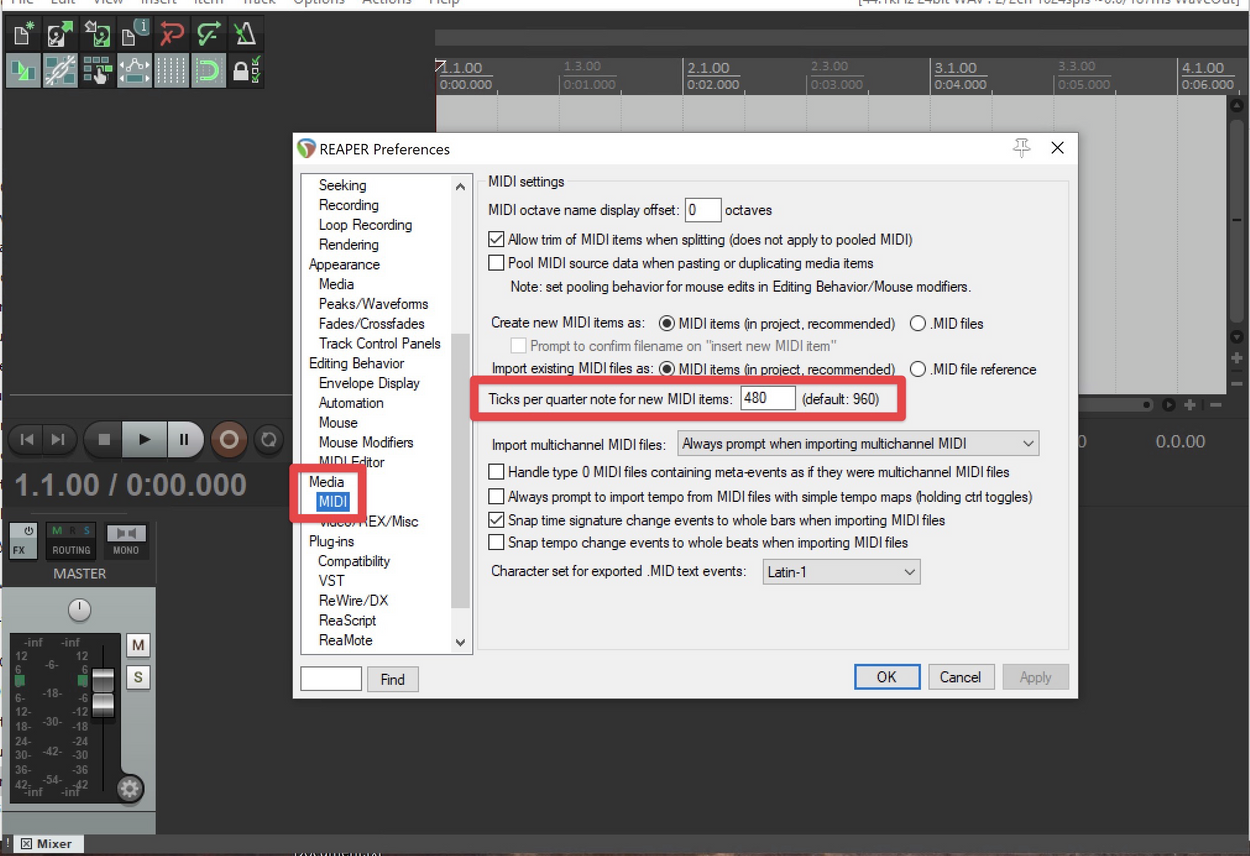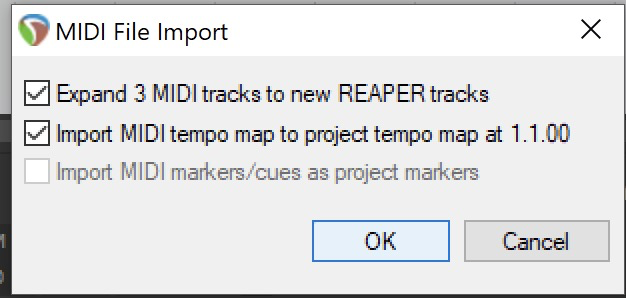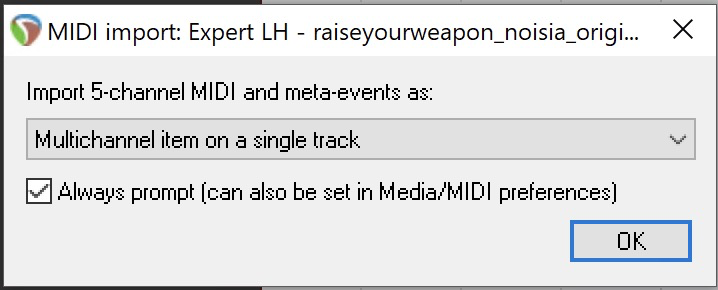# Authoring
# MIDI Authoring
This is the official community maps authoring guide.
Things that you need to know for custom song authoring will be bolded and red.
Things that are new and useful for community map authoring will be bolded and green.
To make the distinction: Community maps are alternate versions of songs in the game. It works with the official songs, it also works with custom songs, not to be mixed with actual custom songs that are brand new songs to play to. This guide covers community map authoring in MIDI format, but it contains alot of information useful for any format and links to relevant information.
# Community Maps README v0.1
(c)2019 Harmonix Music Systems, Inc. All rights reserved. Audica and the Community Maps feature are developed by Harmonix Music Systems, Inc. Audica, Harmonix and all related titles and logos are trademarks of Harmonix Music Systems, Inc.
By using the Audica Community Maps feature, scripts and tools, you accept all terms and conditions set forth in the End User License Agreement (EULA) for Audica, which can be found at https://github.com/jalovatt/Lokasenna_GUI (opens new window)
Reaper templates can be found in your game folder or can be downloaded from https://bsaber.com/downloads/community_maps.zip (opens new window) if you don't have the game.
# Preface: An Overview of MIDI
Audica maps can be created with either MIDI data or JSON data (in a "cue" file format).
If you're not familiar with "Midi," MIDI is a simple computer file format for storing music note data. It allows for up to 128 different notes to be assigned to all kinds of different things (really, anything in the world). If you were recording a full-size piano in MIDI for example (since a full-size piano has 88 keys) 88 of those 128 available midi notes would be used for the different piano keys.
MIDI not only records whether a note has been pressed or not during a specific period of time (with a specific BPM and time signature), but how hard that note was pressed (think about a piano playing softly vs. banging loudly on the notes). This is the note's velocity
As mentioned, MIDI is often used for recording virtual instruments (like a keyboard), but could really be used to record anything. You could create a lightshow by assigning different lights in your house to each of those 128 notes if you wanted. You could assign your garage door opener to open the door with a MIDI note (if you were crazy enough)
Here's an example of someone playing piano with the MIDI notes shown above them. You can see the length that each note is held is also represented
For Audica map editing, midi is used to specify each type of target that you need to shoot or swing at. Each position that you want to place a target is controlled by a specific midi note in time (A description of which Audica targets are assigned to which midi notes are explained later in this guide)
Here's a preview of the map Lazerface played in the '''REAPER MIDI editor** with the included Audica Visual Target plugin giving you a preview of what it looks like to play it:
Here's a quick demonstration of adding specific notes in time that trigger melee notes in Audica
# From Harmonix
A fantastic guide by Harmonix on getting started with mapping in Reaper:
An additional live stream about custom mapping that goes over the process and might be helpful (watch the one up there first):
# Notes About Custom Mapping
Community Maps can be found in-game by
1. selecting a song
2. entering the difficulty select
3. then choosing "Community Maps" from the difficulty select screen.
The community maps feature allows you to create alternate target maps for our in-game soundtrack, and then share them for others to play. This allows you to explore different styles of mapping targets to music, more difficult maps, wacky gimmick maps, etc.
For now, map sharing and loading is a very manual process, but if this feature catches on, we'd like to make it more user-friendly with map upload, map browsing, upvoting, etc. in order to make the maps easier to share.
Again, this feature is in a pretty raw format right now, and we'd like your feedback on how we can evolve it!
You can share your maps and download more maps at the
Harmonix Discord: #audica-community-maps
channel on our official Discord server at discord.gg/Harmonix (opens new window)
Maps that you create or download should be placed in the folder
{AudicaInstallFolder}/community_maps/maps/
in order to be read by the game.
Map naming should be in the following format:
[song shortname]_[map name].[filetype]
That is, the shortname of the song, followed by an underscore, followed by the title of your map (which will be displayed in-game).
You may want to include your username in the title of the map, to claim authorial credit.
Do not include an underscore in the [map name] part of the name, or the map will not be found by the game.
Examples:
"destiny_awwbees - Hyper Mode.mid"
"iwantu_Jeff Allen - All Dad Dabs.cues"
Here are a list of song shortnames for all of our current songs:
adrenaline, boomboom, collider, destiny, golddust, ifeellove, iwantu, lazerface, popstars, raiseyourweapon_noisia, smoke, splinter, synthesized, thespace
Shortnames of the songs released after this guide was created:
addictedtoamemory, breakforme, decodeme, eyeforaneye, gametime, highwaytooblivion_full, highwaytooblivion_short, hr8938cephei, overtime, perfectexceeder, predator, resistance, timeforcrime, tothestars
Each community map receives its own unique leaderboard, and any edits to the contents of a community map results in a new leaderboard.
Maps hotload every time you start a song, so while working on songs, you can edit the map and choose "restart" from the pause menu to load the updated map.
'There are two formats that you can create maps in:
1. MIDI file format: This is the format that Harmonix uses internally for authoring songs. We prefer to edit in MIDI, as MIDI editors are well-suited to placing events in musical time. We've created a series of REAPER scripts that are specifically crafted to help with authoring Audica maps.
2. CUES file format: This is a JSON file format that we cache our MIDI authoring to. We don't use the CUES format for authoring internally, but expected that some community members might not like using MIDI and prefer to edit by hand in a text format. Someone very industrious could even create a custom editor that can load, view, edit, and save CUES files!
A cues editor was made! You can get NotReaper (opens new window) and start mapping using a different editor, if REAPER isn't your thing!
There are example maps for each song to use as a template for working from, which you can find in
{AudicaInstallFolder}/community_maps/tools/example_maps/
Here you will find the expert authoring for each song in our song list, in both the MIDI format and the CUES format. Feel free to use either!
The rest of this document specifically describes how to create maps using the MIDI format, but the information presented here should be helpful in understanding how the CUES format works as well.
For custom songs, you will want to create an .audica file and put it in
{AudicaInstallFolder}/Audica_Data/StreamingAssets/HmxAudioAssets/songs/
While community maps hot loads, custom songs do not so you will have to restart the game for them to load.
While editing and making quick changes you can make a community map for your custom song and hot load that, it works with custom songs too!
# MIDI Authoring Overview
REAPER is our preferred MIDI editor, which allows for custom authoring tools in the form of scripts.
Targets, their timing and layout, are all created using a type 1 MIDI file. Type 1 MIDI files support multiple tracks.
There are 3 tracks in an Audica MIDI file:
- Left Hand
- Right Hand
- Melee
The channel property of a note determines its associated target type:
- default
- slot target type
- chain start
- chain node
The velocity property of a note determines the percussive sound effect that each target "emits" when shot in-game.
For all Audica songs, targets can be authored after the 2 bar count-in is completed.
All Audica mixes have a minimum of 2 bars worth of lead-in audio to account for this.
Text events are for author-facing display only, for visual aid. They are not parsed by the game.
Using an instrument such as REAPER's built-in sampler will help you preview how your rhythmic content sounds.
# Required Tools
# REAPER Setup
You can get a trial of the latest version of REAPER here (opens new window)
Here's a quick start guide (opens new window) for Reaper
If you enjoy using REAPER, we recommend purchasing it to support the developer!
# Before You Start
IMPORTANT! Before diving in, be sure that you set REAPER's MIDI preferences so that your "Ticks Per Quarter Note" is set to 480.
To set this, go to
Options->Preferences, then in the Media->MIDI page
set "Ticks per quarter note for new MIDI items" to 480.

As a starting point, you can import MIDI files for the expert authoring of each of our tracks by looking in community_maps/tools/example_maps
To import a MIDI file into REAPER, go to:
Insert->Media File... and select the desired MIDI file
When importing these MIDI files in REAPER, be sure to:
- Have "Expand 3 MIDI tracks to new REAPER tracks" enabled
- Have "Import MIDI tempo map" enabled

After clicking OK that dialog, import each track as "Multichannel item on a single track" in the dialogs that follow

# Authoring Official Guidelines
Guidelines are constantly evolving, but these are correct up to Audica ver 1.01
# Beginner
For songs with tempos faster than 150bpm or so, double the note values used for each difficulty.
# Beginner (Rules)
Allowed targets: Basic, Sustain (incl. Duals of these)
Switching hands...
- Switching between hands is considered a mechanic change; needs at least 1 measure of lead-in time before switching to a different color target.
Basic targets...
- No more than one target per beat. (more info in Beginner Suggestions)
- No more than 3 grid spaces between consecutive targets, regardless of how much musical time is between targets.
Sustains...
- At least one beat of rest in between a sustain end and next target on the same hand
Simultaneous targets...
- At least 4 beats of lead in time.
- At least 2 beats before next target.
- No hand crossing.
- Targets can't be more than 3 grid spaces apart. Aim for 1-2 grid spaces.
No slotted notes
No chains
No crossing hands
No melees
# Beginner (Suggestions)
- If you author on consecutive beats, only author them for Basic targets, try not to use more than 2 in a row, and only use them on harder songs. The easiest songs shouldn't have any targets on consecutive beats (author on every other beat).
- Rhythms should deviate from this default pacing when appropriate to highlight signature rhythmic moments in specific songs (or to feature sustains/chains at appropriate times).
- Not too many sustains. People tend to forget to hold the trigger down at this difficulty.
# Standard
For songs with tempos faster than 150bpm or so, double the note values used for each difficulty.
# Standard (Rules)
Allowed targets: Basic, Sustain, Melee, Chain (incl. Dual Chains)
Simultaneous targets...
- can be no more than 3 grid spaces apart.
- when changing mechanics, need at least 2 beats of rest before a simultaneous target.
- No hand crossing
Basic targets...
- No more than 3 grid spaces between targets that are less than 2 beats apart. Targets that have more musical time between them can be spaced more distantly.
- No more than 2 8th notes in succession.
- No consecutive 8th notes on one hand.
Melee targets...
- Must be isolated, or at least 2 beats after a sustain start
- 2 beats of rest after a melee if changing mechanics.
- No more than one melee (or two-handed melees) per 1/4 note.
Sustains...
- 1 beat in between sustain end and next target on the same hand.
Chain targets...
- Must be isolated, no targets or melees during chains.
- When changing mechanics, needs at least 2 beats of rest before and after.
No slotted notes
# Standard (Suggestions)
- Use mostly half and quarter notes,
- Avoid using more than 8 successive quarter notes.
- Group syncopated, quarter and eighth notes together closely (~1 grid space apart).
- Successive eighth notes should be saved for the most difficult songs in the tier.
- Notes that are 1.5 beats apart are ok up to ~150 BPM.
- Start chains on strong beats.
- If crossing hands, have lots of space between each target. No hand-crossing during simultaneous targets.
- Consider making diagonal simultaneous targets a bit closer than the required 3 spaces.
- In place of vertical simultaneous targets, consider nudging each hand towards its natural side via GP Slider. (i.e. nudge left target slightly left, nudge right hand target slightly right.)
- Use sustains wherever needed.
- Targets that precede a melee should be close enough to an oncoming melee so that it's visible (within 2 grid space).
# Advanced
For songs with tempos faster than 150bpm or so, double the note values used for each difficulty.
# Advanced (Rules)
Allowed targets: Basic, Sustain, Melee, Chain, Slots (incl. Duals of these)
Basic targets...
- No more than 3 consecutive sixteenth notes
Slot targets...
- When changing mechanics, horizontal slots need 2 beats of lead-in time
- When changing mechanics, vertical slots need 1 beat of lead-in time
Chains...
- At least 1 beat between end of a chain and next target on same hand
Simultaneous targets...
- Introduce simultaneous-target hand crossing.
- No more than 4 grid spaces apart
Sustains...
- At least 1 beat between end of sustain and next target on same hand
Melees...
- If there's a simultaneous melee-and-target, no hand crossing. Use these very sparingly, and only in more difficult songs.
# Advanced (Suggestions)
- The start and end of chains should be within 4 grid spaces of each other.
- For easier songs, diagonal simultaneous targets should have some lead-in time.
- Introduce hand crossing. For easier songs, author hands on the proper side and lead the sequence so that they cross gradually.
The tl;dr here is “use all target types and try to make the Standard-to-Advanced-to-Expert ramp smooth as possible.”
# Expert
# Expert (Rules)
Sustains...
- At least 1 beat between end of sustain and next target on same hand.
# Expert (Suggestions)
- Don't be dumb
- End of a chain should have at least 1 beat of space between the last link and the next target on the same hand
*** for more tips on mapping, see the Audica Mapping Guidelines (opens new window)